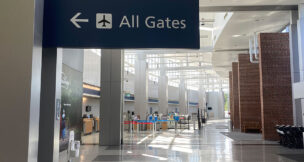US stocks climb in shaky trading but the US dollar and government bonds sink as trade-war fears rise
NEW YORK (AP) — U.S. stocks are climbing in shaky trading Friday as President Donald Trump‘s trade war with China escalates further and U.S. households get more worried about it. Gold’s price is rising, the U.S. dollar’s value is falling and other financial markets are also swinging in indications of fear about where the U.S. economy will ultimately fit in the worldR[...]
The Latest: Global tariff battle escalates as China retaliates with 125% tariffs on US goods
China announced Friday that it will raise tariffs on U.S. goods from 84% to 125% — the latest salvo in an escalating trade war between the world’s two largest economies that has rattled markets and raised fears of a global slowdown. While U.S. President Donald Trump paused import taxes this week for other countries, he raised tariffs on China and […]
The Latest: S&P 500 falls 2% at the open despite Trump’s tariff pause
U.S. stocks are giving back some of their historic gains from the day before as Wall Street weighs a global trade war that has cooled in temperature but is still threatening the economy. The S&P 500 was down 2.3% early Thursday, a day after surging 9.5% following President Donald Trump ‘s decision to pause many of his tariffs […]
The Latest: Asia and European shares sink as US tariffs take effect
Facing a global market meltdown, President Donald Trump on Wednesday abruptly backed down on his tariffs on most nations for 90 days but raised his tax rate on Chinese imports to 125%. U.S. markets surged in response. The S&P 500 was up 7.8% in afternoon trading. It had been down earlier in the morning amid worries […]
Wall Street could be headed for a bear market. Here’s what that means
NEW YORK (AP) — Wall Street could soon be in the claws of another bear market as the Trump administration’s tariff blitz fuels fears that the added taxes on imported goods from around the world will sink the global economy. The last bear market happened in 2022, but this decline feels more like the sudden, turbulent bear market of 2020, when […]
The Latest: Stocks plummet as global markets feel the impact of Trump’s tariffs
U.S. stocks careened after President Donald Trump threatened to crank his tariffs higher on Monday. The S&P 500 was down 0.8% in late trading, but only after a day of heart-racing reversals as battered financial markets try to figure out what Trump’s ultimate goal is for his trade war. If it’s to get other countries to agree to trade deals, […]
China retaliates as Trump’s tariffs affect world markets
BANGKOK (AP) — Countries and industries were scrambling Friday to respond as President Donald Trump‘s latest tariffs hikes upend global trade and world markets. China responded to the 34% tariffs imposed by the U.S. on imports from China by announcing it will impose a 34% tariff on imports of all U.S. products beginning April 10. […]
US electric vehicle industry is collateral damage in Trump’s escalating trade war
DETROIT (AP) — President Donald Trump‘s tariff blitz has sent shock waves throughout every aspect of the global economy, including the auto sector, where multi-billion-dollar plans to electrify in the United States are especially at risk. Here’s what consumers should know about the impact of tariffs on electric vehicles. Where does EV adoption stand in the U.S.? […]
US added a surprising 228,000 jobs last month, as the American economy shows resilience amid Trump’s trade wars
WASHINGTON (AP) — U.S. employers added a surprising 228,000 jobs last month, as the American labor market continues to show resilience as President Donald Trump wages trade wars, purges federal workers and deports immigrants working in the United States illegally. The unemployment rate ticked up to 4.2%. The hiring numbers were up from 117,000 in […]
Global markets, Wall Street continue to slide after China slaps retaliatory tariffs on imports
Global markets slid further and Wall Street was on track for another day of crushing losses Friday after China responded to U.S. President Donald Trump‘s latest set of tariffs with some of their own. Futures for the S&P 500 fell 3.6% before the bell, while futures for the Dow Jones Industrial Average shed 3.4%, falling […]
Dow drops 1,600 as US stocks lead worldwide sell-off after Trump’s tariffs cause a COVID-like shock
NEW YORK (AP) — Wall Street shuddered, and a level of shock unseen since COVID’s outbreak tore through financial markets worldwide Thursday on worries about the damage President Donald Trump‘s newest set of tariffs could do to economies across continents, including his own. The S&P 500 sank 4.8%, more than in major markets across Asia and Europe, for its worst […]
Trump announces sweeping new tariffs to promote US manufacturing, risking inflation and trade wars
WASHINGTON (AP) — President Donald Trump declared on Wednesday a 10% baseline tax on imports from all countries and higher tariff rates on dozens of nations that run trade surpluses with the United States, threatening to upend much of the architecture of the global economy and trigger broader trade wars. Trump held up a chart […]























